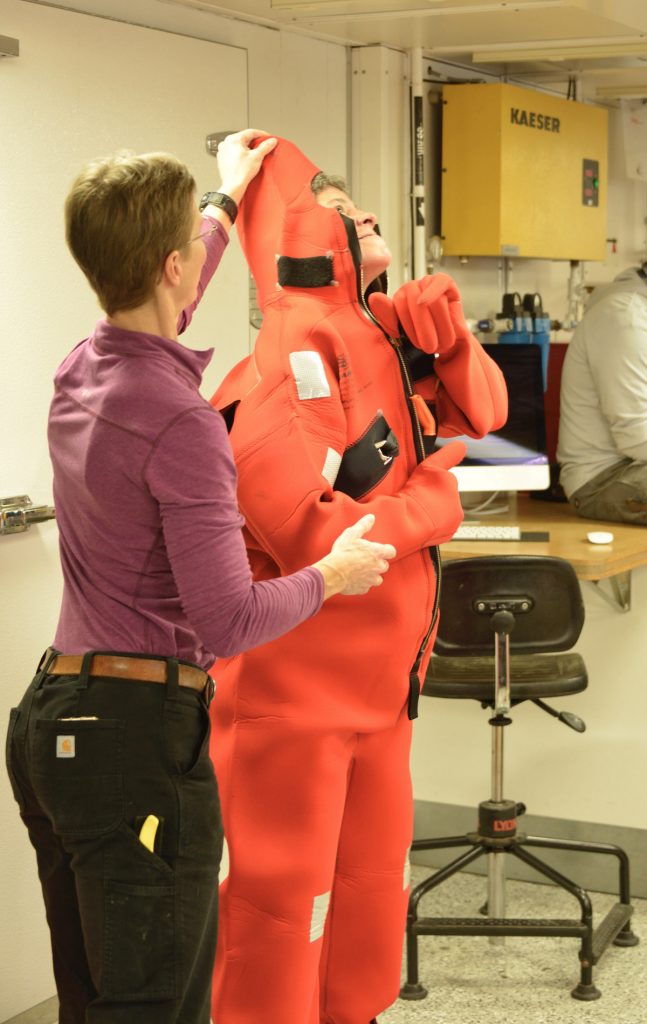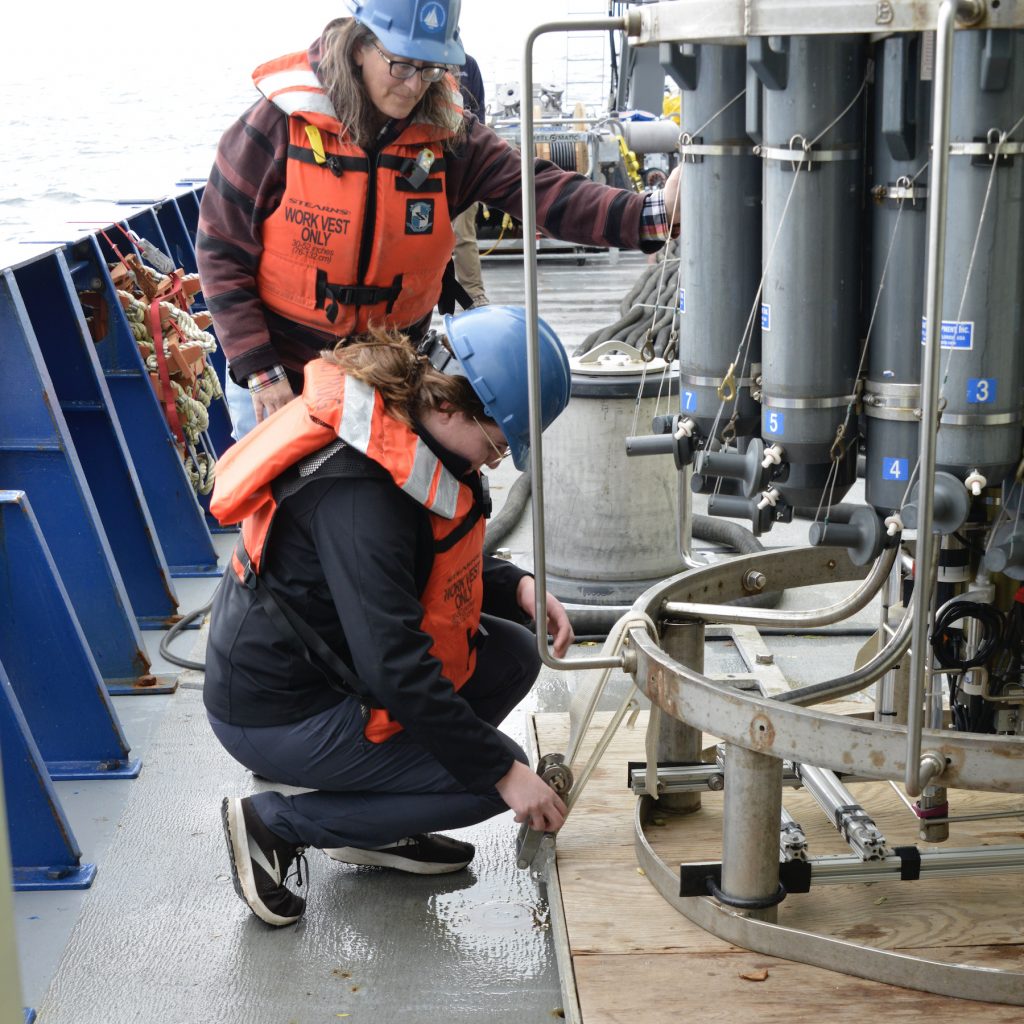
Finally at Sea

Jennifer Batryn, Irene Duran, Darlene Trew Crist, and Diana Wickman at the WHOI dock waiting for departure. Photo: Derek Buffitt ©WHOI.
The 14 members of the Pioneer 17 science party were all onboard the R/V Neil Armstrong at 9 am sharp on Friday 29 October. All were eager to head out to the array, which is about 75 nautical miles south of Martha’s Vineyard after a three-day weather delay caused by a roaring nor’easter. The storm complicated things onshore slightly because it took out power from our home port at Woods Hole Oceanographic Institution (WHOI), making communications amongst team members challenging, but not impossible.
The first task of the day was to ensure the equipment in the main lab was secured, which will serve as central operations for the next seven days. Laptops are placed on top of non-skid material, and secured by tie-downs and bungee cords. A lot of equipment is stored in water-tight plastic tubs, which are also tied down in case of rough wave action. First Mate, Jen Hickey, welcomed everyone aboard, then conducted a serious safety briefing. We learned about what various ship alarm whistles meant (from person overboard to fire on the ship), then each donned our “gumby” survival suit – neoprene immersion suits for survival in cold water. While the suits are funny looking, I was surprised that it took a bit of finesse to get them on properly. Zipping the zipper with foam-encrusted hands was a particular challenge. We also practiced donning personal flotation devices (PFDs) or “lifejackets” and where to congregate to board life rafts should we need to abandon ship.

First mate Jen Hickey helps science party member Dee Emrich zip her “gumby” survival suit as part of safety training.
It’s about an eight-hour ride to the array from Woods Hole, so during the afternoon we settled into a routine. Taking advantage of the temporarily sunny weather, we conducted some CTD (conductivity, temperature, depth) casts for the Northeast US Shelf Long-Term Ecological Research (NES-LTER) project, which is trying to under understand how planktonic food webs are changing in the region and how those changes might be affecting higher trophic levels. NES-LTER personnel will be sailing on leg 2 to conduct sampling at multiple locations.
Mid-afternoon, around 02:30 pm is known as “cheese-thirty.” The mess crew set out a spread of cheese, meats, crackers, and bread for a quick pick-me-up and snack for crew and science party, alike.
The seas started to pick up around 4 pm, causing the ship to feel like it was rocking and rolling. Old sailing hands ignored it, while others of us pretended to be ignoring it, some more successfully than others.

Sawyer Newman straps down the CTD rosette after a successful cast for the Northeast US Shelf Long-Term Ecological Research (NES-LTER) project. SSSG Tech, Amy Simoneau watches progress to ensure a proper tie down.
As the day progressed, two more CTD casts were undertaken for the benefit of our colleagues at NES-LTER to add to their data pool and improve modeling. The last cast was completed in the darkness under lights. These casts serve as an example of the symbiotic relationship among researchers that happens with expensive, limited ship time. Often researchers help each other collect data to take full advantage of this precious resource.
My takeaway from the first day is that nearly as soon as we left the dock, the ship, science party, and crew became a community unto itself. Being away from the everyday world that we know, we each adopted the one in which find ourselves, creating a cooperative, collaborative community at sea. A floating village of interesting characters it is.
Most images and all text by Darlene Trew Crist©WHOI.
